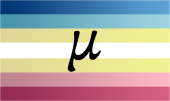Intergenerational Lesbianism: Difference between revisions
The Admins (talk | contribs) (notoc, format, unsure of Gay ref relevance, so added as "further reading" until we know what it is saying) |
|||
| Line 14: | Line 14: | ||
*Judith Gay, "Mummies and Babies" and Friends and Lovers in Lesotho’ (1986).<ref>[https://doi.org/10.1300/J082v11n03_07 Judith Gay, "Mummies and Babies" and Friends and Lovers in Lesotho’, in Journal of Homosexuality, 11:3-4 (1986), 97-116] and [https://sci-hub.se/10.2307/23816159 full version on Sci-Hub].</ref> | *Judith Gay, "Mummies and Babies" and Friends and Lovers in Lesotho’ (1986).<ref>[https://doi.org/10.1300/J082v11n03_07 Judith Gay, "Mummies and Babies" and Friends and Lovers in Lesotho’, in Journal of Homosexuality, 11:3-4 (1986), 97-116] and [https://sci-hub.se/10.2307/23816159 full version on Sci-Hub].</ref> | ||
*''Paidika'', Vol. 2, No. 4 (1992): Special Women's Issue | |||
*Marina Knopf, "Sexual Contacts Between Women and Children", in ''Paidika'', Vol. 3, No.3 (1994). | |||
*Amanda H. Littauer, Queer Girls and Intergenerational Lesbian Sexuality in the 1970s, in ''Historical Reflections'', 46:1 (2020), 95-108. | |||
==See also== | ==See also== | ||
Revision as of 14:57, 5 May 2022
 | |||||||
| Part of NewgonWiki's series on minor-attracted identities | |||||||
|---|---|---|---|---|---|---|---|
|
| |||||||
| Starting Guide | Community | Pediverse MAP | NOMAP | AAM | Neologisms "MAP" Origins | Flag | Movement Political history: MAP & LGBT Alliances Philias: Ephebo - Hebe - Pedo - Nepio Gender and attraction: BL - EL - GL Pederasty/Gay BL | Korephilia/Lesbian GL Pro-c | Neutral-c | Anti-c BLogo | GLogo | |||||||
|
| |||||||
| Category: Minor-attracted people | |||||||
| Template:MAI - This template |
Intergenerational Lesbianism, sometimes called Korephilia is an age-structured relationship (similar to pederasty), but between a woman and a girl. Many women experience romance as a maternal feeling, and often express that love through nurturing and caring for the loved girl. From the outside looking in, you might just see them as a mother and daughter. But the maternal bond they share triggers romantic feelings in them. The woman is often romantically fulfilled by doing things (mundane, or sexually) for the pleasure and benefit of the loved girl.
There have been recent depictions of Intergenerational Lesbianism in popular culture. "The Little Coochie Snorcher That Could" from "The Vagina Monologues," recounts the experience of a thirteen year old girl's relationship with an older woman. The 2013 film Blue Is the Warmest Colour, depicts the friendship between a 15 year old girl and an adult woman that becomes erotic.
The word korephilia comes from the Greek words κόρη kórē meaning "girl" and φιλία philíā meaning "love". Most people use korephilia to describe a woman/girl relationship, while others use it to describe an adult/girl relationship.
Research literature
Until recently, intergenerational lesbianism has received little attention from scholars. In her 2020 journal article Queer Girls and Intergenerational Lesbian Sexuality in the 1970s[1], U.S. historian Amanda H. Littauer broke the silence, offering the first scholarly publication ever to overtly discuss the topic in a western, post-industrial society based on case-studies (summarized here).
In previous literature, writers such as feminist activist Kate Millett interpreted aversion to intergenerational eroticism as a product of women being subjects of historical patriarchy. Millett contrasted the more prevalent discussion and even defense of mutually willing intergenerational eroticism within the male-gay movement (see LGBT-MAP Unity), with the aversion many women and lesbians espoused. Millett wrote that women are "more sexually repressed than men, having been given a much more puritanical code of behavior than men ever have"[2]. Unlike men who had the history of pederasty to draw on, "It’s possible," Millett explained, "that the condition of lesbians has been so repressive that it prevents them from seeing people below the age of consent as sexual partners" (Ibid).
Further reading
- Judith Gay, "Mummies and Babies" and Friends and Lovers in Lesotho’ (1986).[3]
- Paidika, Vol. 2, No. 4 (1992): Special Women's Issue
- Marina Knopf, "Sexual Contacts Between Women and Children", in Paidika, Vol. 3, No.3 (1994).
- Amanda H. Littauer, Queer Girls and Intergenerational Lesbian Sexuality in the 1970s, in Historical Reflections, 46:1 (2020), 95-108.
See also
- Pederasty
- Testimony: Adult Female with Minor - Contains some examples.
- Testimony: Experiences of chronophilias - Contains some examples.
External Links
- She Said - Women, Lesbians, and Feminists Speak About Youthlove
- Korephilia - RationalWiki.
- A MAP In Love - A Blog by Katie Cruz